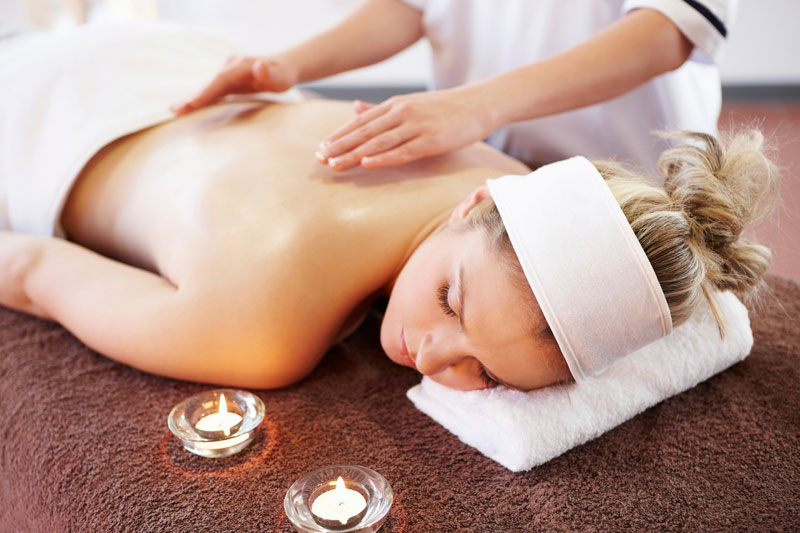Complementary Treatments Supplement Western Medicine
Written by Donna C. Gregory
—
[dropcap]Physicians used to scoff when patients would ask about trying alternative medicine, labeling such things as quackery and a waste of money. [/dropcap]But views have changed in recent years as the traditional medical community becomes more accepting of acupuncture and other complementary treatments. Some modalities, like massage, have even gone mainstream.
Below are a few of the more popular modalities available today.
Acupuncture
Acupuncture is an ancient healing modality, dating back at least 2,500 years. It’s generally credited to China, but was actually widely used across Asia and Europe.
“It’s not just needling, but a whole system of healing,” explains Dr. Wade Quinn with Integrative Chiropractic & Acupuncture, located in Williamsburg. “The two strongest components are needling and herbs.”
“What makes acupuncture a good treatment is that it’s a systemic treatment, meaning it treats the whole body,” he continues. “The simple understanding would be that acupuncture is about energy in your system called ‘chi.’ The flow of chi is through 12 primary meridians. A meridian is a pathway through which energy flows. A well person is one whose energy is flowing freely. When there’s a blockage somewhere in the meridians, it’s called the stagnation of chi.”
Acupuncture helps free those blockages, improving health and well-being. It’s commonly used to treat back, neck, jaw and joint pain as well as chronic conditions, such as depression, anxiety, allergies, asthma and migraines. It’s also helped people quit smoking and lose weight and is becoming more accepted by the traditional medical community.
For those who are squeamish about needles, acupressure, a technique that involves applying pressure to the acupuncture points, might be an alternative.
The Alexander Technique
Chronic back and neck pain sufferers may find relief through the Alexander Technique. This “gentle movement education program” was developed by Australian actor F.M. Alexander in the 1890s when physicians couldn’t cure his chronic laryngitis. After years of self-observation, Alexander deduced that his condition was caused by muscle tension, and set about creating a system to encourage stability between the head, neck and back, while reducing muscle strain.
“The technique is based on three principles: recognizing and stopping habitual patterns of muscle tension; using conscious thought to free and lengthen the body’s structure; and allowing the head to balance freely on the top of the spine in order to allow for balanced movement,” explains Emily Clark, an Alexander Technique certified instructor.
The typical Alexander Technique client is seeking relief from back, neck and shoulder pain. The method is also used by performers and athletes to improve function in the vocal tract and lungs.
“Over a series of lessons, the student would learn to replace their habits of tension with more balance and ease,” Clark explains. “We call it a lesson rather than a treatment because it really is a re-education of the body/mind. The great thing about this technique is you don’t need to keep going forever because you’re learning the skills to take care of yourself.”
Reflexology
In reflexology, the feet are the foundation of healing.
“Reflexology is a science that deals with the principles that there are reflex areas in the hands and feet that correspond to the organs, glands, muscles—all aspects of the body,” says JulieBeth Mezzy, an accredited reflexology educator.
During a treatment, the reflexologist uses his or her thumbs, fingers and hands to apply pressure to areas along the client’s feet and hands.
“Feet are like a mini-map of the body,” Mezzy explains.
For example, the pads of the toes are believed to correspond to the sinuses, so theoretically, stimulating that area could improve sinus conditions.
“We’re not allowed to diagnose, treat or prescribe,” Mezzy cautions. “I just say the worst thing I can promise is you’re going to be relaxed when you leave. It is excellent for stress and relaxation.”
Reiki (pronounced “ray-kee”)
According to the International Center for Reiki Training, “Reiki is a Japanese technique for stress reduction and relaxation that also promotes healing. It is administered by ‘laying on hands,’ and is based on the idea that an unseen ‘life force energy’ flows through us and is what causes us to be alive. If one’s ‘life force energy’ is low, then we are more likely to get sick or feel stress, and if it is high, we are more capable of being happy and healthy.”
During a typical one-hour Reiki session, the client lies on a massage table fully clothed, while the practitioner uses his or her hands to hold different positions over the major joints, glands and organs. Reiki is thought to promote healing by reducing stress and anxiety, and bringing the person back into a relaxed, balanced state.
“When I’m giving a session, I like to have the client be part of the team,” explains Judy Settle, Reiki master and owner of Energy Arts Unlimited in Virginia Beach. “Basically, they’re giving permission for the healing.”
The practitioner simply acts as a channel for the energy.
“It’s really supporting people in their own healing,” Settle explains.







